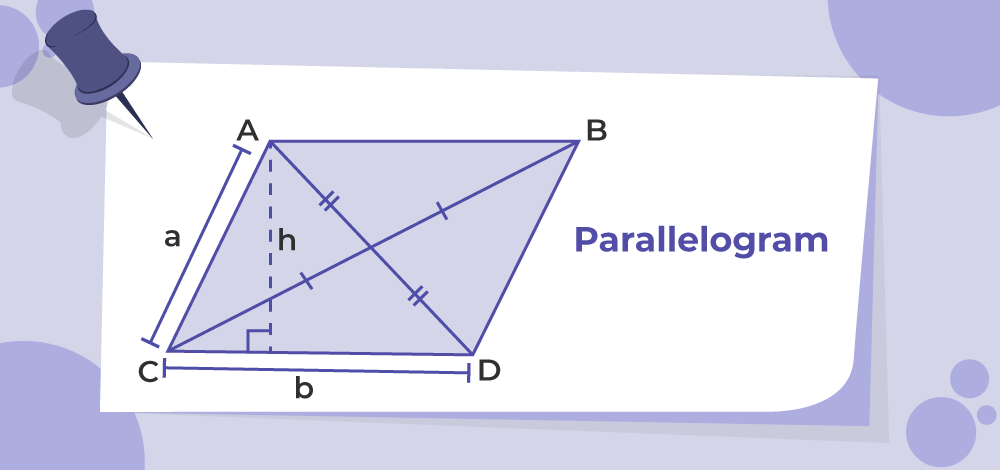
|
|
Parallelograms are fundamental geometric shapes in mathematics that are basically used in various fields like architecture, Engineering, and others. They can even be found in common places near you like windows, doors, tables, etc. where their symmetrical characteristics enhance both functionality and beauty. Understanding the various applications of parallelograms enhances our awareness of the value of geometry in everyday situations. What is Parallelogram?A parallelogram is a quadrilateral with two pairs of opposite sides that are parallel and equal in length. Also, the opposite angles of a parallelogram are equal. Suppose, we have a polygon with 4 sides that can be identified by quadrilateral □ ABCD, in which AB ∥ CD and AC ∥ BD.A A parallelogram ABCD with height ‘h’ is shown in the image added below:
Uses of ParallelogramVarious applications of parallelogram includes: In ArchitectureIn designing and constructing buildings workers make use of parallelograms in making windows, roofs, doors, rooms, etc. Whereas, Parallelograms are essential in structural engineering design for load-carrying structures, girders, and frameworks because they provide stability and even force distribution. They can be found in floor plans, roofing designs, and supporting structures such as trusses and beams. In Engineering and MechanicsParallelograms are used in engineering and mechanics to analyze forces and vectors. They are often employed to represent the equilibrium of forces in statics problems, as well as to calculate moments and torques in mechanical systems. In Solar PanelsTwo most popular geometric shapes for solar panels are rectangles and parallelograms. Solar panels in the shape of a parallelogram are often chosen because they are easy to secure to the sides of shed roofs. In Interior DesigningIn Interior designing, Parallelograms are important because they help in designing furniture, fixtures, and decorative components for arrangement. For example, parallelogram-shaped surfaces or divisions are commonly found in tables, shelves, and cabinets, and they improve both functionality and visual appeal. In Environmental ScenarioParallelograms can be used in any environmental scenarios for activities including estimating land area, creating irrigation systems, and simulating fluid flow patterns. In Automobile EngineeringIn the design of suspension systems, driving systems, and transmission connections, parallelograms are used. Whereas, They contribute to the stability and speed of vehicles by ensuring smooth and controlled motion. In Imaging and PhotographyParallelograms are used in imaging and photography to coordinate images and correct vision errors. Whereas, They support the preservation of accurate angles and dimensions in landscape and architectural photography. Properties of ParallelogramSome common properties of parallelograms are given below;
ConclusionIn conclusion, parallelograms are fundamental geometric shapes that have a wide range of practical uses. Their symmetrical qualities aid in efficiency and stability in various daily life applications. Simply, we talk about the identifying parallelogram with shapes just to highlight some of the products like, windows, rooms , tables, land areas and so on. Examples on ParallelogramExample 1: If EC = 7, Find BC.
Solution:
Example 2: Two adjacent sides of a parallelogram are AC = 5 cm and CD = 2 cm. Find its perimeter.
Solution:
Example 3: If m ∠ ABC = 65 and m ∠BAC = 55, Find m∠ DBC.
Solution:
FAQs on Uses of ParallelogramWhat are some of common architectural parallelogram examples?
Are all rectangles parallelograms?
Are a parallelogram’s diagonals always able to bisect each other?
Does a quadrilateral have to have equal sides to be a parallelogram?
Are parallelograms used in any environmental scenarios?
In what ways may parallelograms help with problem-solving in real-life applications?
|
Reffered: https://www.geeksforgeeks.org
| Mathematics |
Type: | Geek |
Category: | Coding |
Sub Category: | Tutorial |
Uploaded by: | Admin |
Views: | 15 |


